Text
Pest Control
If you Google “field mice”, some of the top results you will get are related to pest control. Roaches, crickets, prairie dogs–most people see these things in their home or garden and beeline straight to the pest control section of Home Depot. There are multitudes of options out there for getting rid of these common household pests, many of which are chemical. These products may be advertised as safe around children and pets, but are they safe around the ecosystem? If burrowing owls are your thing–or owls in general!–you may want to double-think grabbing the nearest can of bug spray.
Pesticides can have a more profound effect on predatory bird populations than on the prey that they eat. It makes sense, if you think about it: one mouse may have a small amount of contaminant in its system, but raptors don’t just eat one mouse, much like you can’t just eat a single Pringle®. By eating more and more of these contaminated mice, their predators suffer from rising levels of poisons being metabolized in their system. This can be especially bad for burrowing owls, since they are known to occasionally scavenge for food¹; a rodent that had died from a lethal dose of agricultural pesticides could look like an easy take-out meal for burrowing owls.
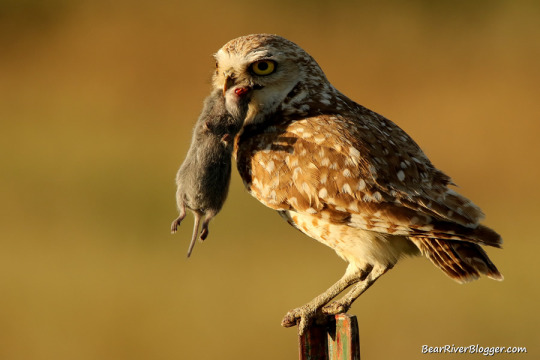
Once you pop, you can’t stop (please don't sue me Pringles). Credit to Jeff Strong of Bear River Blogger.
The fact that burrowing owls are pretty tolerant of urban environments also brings them closer to common pesticides used in our attempts to get rid of rats. A huge number of owls in urban environments have traces of anticoagulant rodenticides in their systems, and, concerningly, we don’t really know how much they can tolerate before it becomes too toxic for them to handle, or how these rodenticides will affect their populations.² These chemicals are also persistent, staying in the environment for long periods of time. Although not the primary cause of death, a concerning amount of rodenticide was found in Flaco the Eurasian eagle owl’s blood after he passed away after having been released from Bronx Zoo from vandals and free-roaming for just one year.³
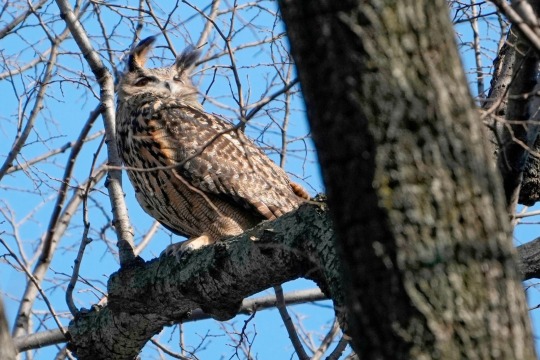
Flaco the Eurasian eagle owl. We miss you, buddy! Credit to Seth Wenig of the Associated Press.
So, it’s obvious that using traditional pesticides can be very harmful to burrowing owls and other predatory raptors. That being said, you might still have an issue with pests in your yard and your home. What are some alternative options? Well, I will preface by saying this: there is no “one size fits all” solution, and many forms of pest management that do not involve chemical pesticides take time to develop. If they don’t work out for you, or if you feel like chemical pesticides can tide you over while you develop less toxic pest control measures, be sure to visit the Environmental Protection Agency’s Do’s and Don’ts of Pest Control for tips on how to minimize potential risk to yourself and your environment. However, if you do decide to go the alternative route, remember that, in the end, you will be creating your own personal habitat, resilient against not only pests, but resilient against disease and climate change as well.
One method you may want to consider, especially for insects, is companion planting. Though research on how companion planting works is still in its infancy and generally focused on large agriculture, the concepts can still be applied.⁴ By incorporating plants that attract the natural predators for pests into your garden, you will be able to naturally deter and diminish the pest population.
When it comes to the bigger stuff, like field mice, rats, moles, or gophers, there are a lot of simple, nonlethal ways to prevent them from finding a tasty snack in your garden without outright eliminating them from your local ecosystem. After all, their presence is beneficial to the environment, by stirring up the soil and improving its quality as well as creating homes for native wildlife, such as burrowing owls.⁵ One of the easiest, “set it and forget it” type options available may be using a wire mesh basket, often called “gopher baskets”, to put the roots of your plants in as you plant them. These can protect the main body of your plant while allowing for growth and, most importantly, still allowing burrowing critters to do their thing!
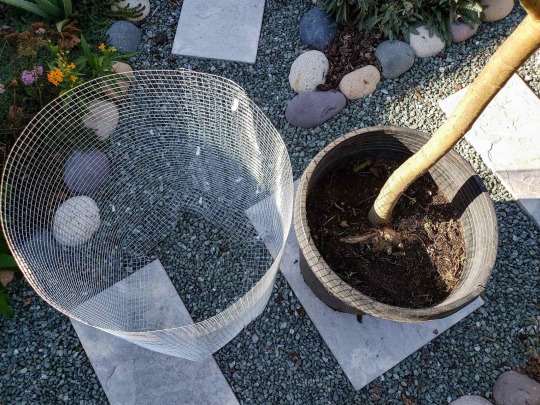
An example of a large gopher basket to protect a tree sapling. It’s like a cute little prison for trees! Credit to Deanne Talerico of Homestead and Chill, here is a link to her instructions on how to make these yourself!
This is a particularly short list of actions you can take to make your garden a little more critter-friendly. For more specific information that may be more relevant to the ecosystem you live within, look out for workshops and classes on gardening in your local area! Often run by community centers, these types of gatherings are a great way to connect with other gardeners and share tips on how to make a more sustainable, eco-friendly habitat.
¹Klute, D., Ayers, L., Green, M., Howe, W., Jones, S., Shaffer, J., Sheffield, S., & Zimmerman, T. (2003). Status assessment and conservation plan for the western burrowing owl in the United States. United States Fish and Wildlife: Staff Publications. http://digitalcommons.unl.edu/usfwspubs/483
²Gomez, E. A., Hindmarch, S., & Smith, J. A. (2021). Conservation letter: Raptors and anticoagulant rodenticides. Journal of Raptor Research, 56(1). https://doi.org/10.3356/jrr-20-122
³Hutchinson, B. (2024, March 25). Zoo releases final necropsy results on Flaco the owl’s death. ABC News; ABC News. https://abcnews.go.com/US/zoo-releases-final-necropsy-results-flaco-owls-death/story?id=108479170
⁴Saldanha, A. V., Gontijo, L. M., Carvalho, R. M. R., Vasconcelos, C. J., Corrêa, A. S., & Gandra, R. L. R. (2019). Companion planting enhances pest suppression despite reducing parasitoid emergence. Basic and Applied Ecology, 41, 45–55. https://doi.org/10.1016/j.baae.2019.10.002
⁵Davidson, A. D., Detling, J. K., & Brown, J. H. (2012). Ecological roles and conservation challenges of social, burrowing, herbivorous mammals in the world’s grasslands. Frontiers in Ecology and the Environment, 10(9), 477–486. https://doi.org/10.1890/110054
0 notes
Text
Mom sent me a facebook link to a PBS news hour post about how the anti-lawn movement is growing. The vast majority of the comments on it were stuff like this:


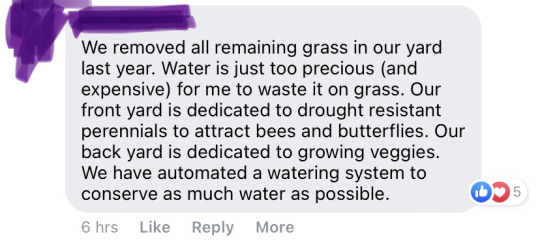
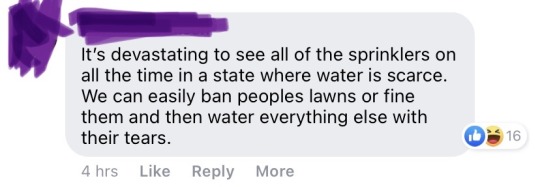
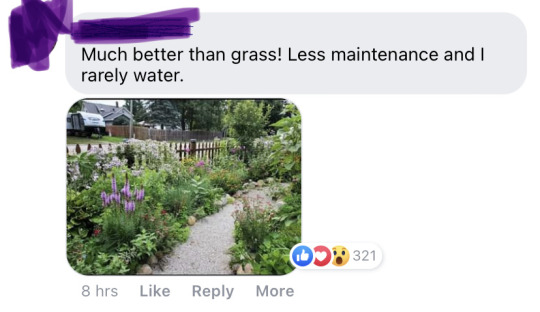


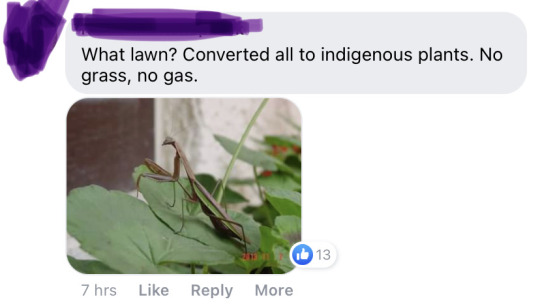
Most people are on our side here, even the so-called "boomers." We just have to be spreading ecological knowledge and practical means of creating useful habitat in back yards! Educate! Protect! Resist!
59K notes
·
View notes
Text
It's just very important to me that you know prairie-style gardens exist.

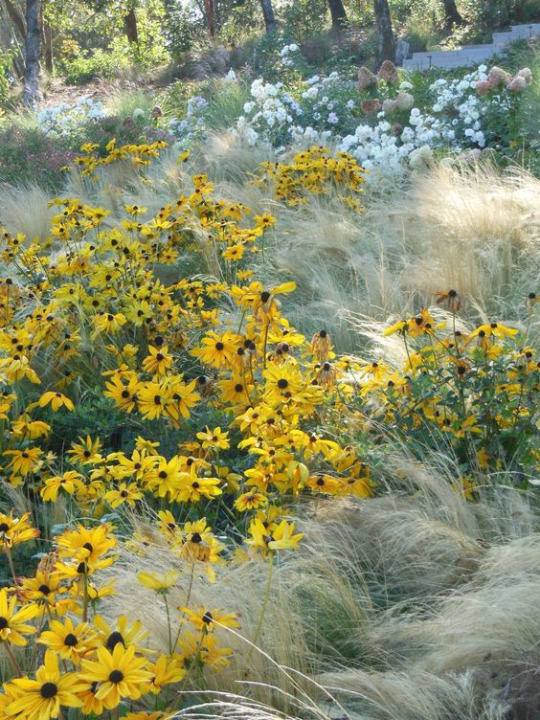
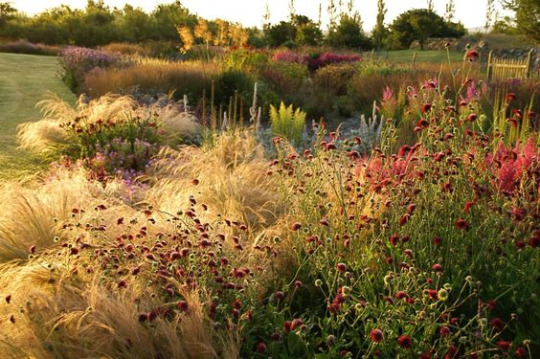

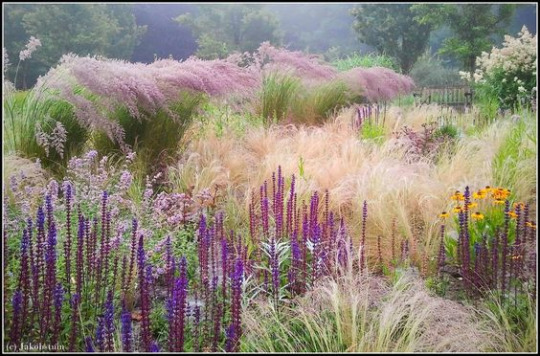
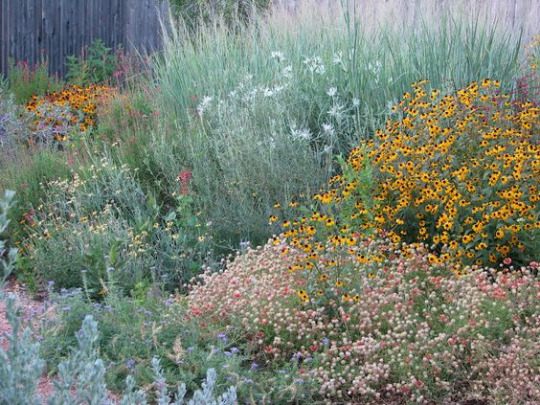
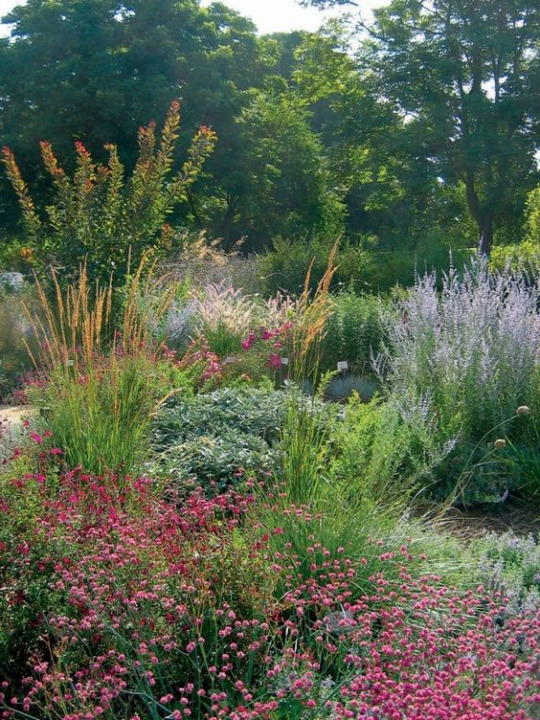

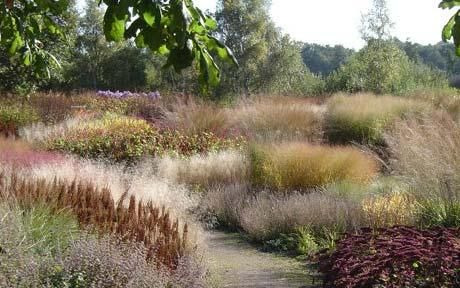

Ok. Thank you. Carry on.
84K notes
·
View notes
Text
Artificial Burrows
Empty mole hill in your yard? While burrowing owls might take to it like they’re on an episode of House Hunters, the burrows left behind by burrowing mammals can be a bit of an eyesore to us. Artificial burrows may be an appealing alternative, but hold your horses! There are advantages and disadvantages to the use of artificial burrows to attract burrowing owls.
Artificial burrow systems (frequently shortened as ABS) refer to small, simple constructions that are buried underground by researchers and conservation organizations to provide housing to burrowing owls where burrows are scarce.¹ That’s right: there’s a housing crisis for the burrowing owls, too. Steep declines in the populations of native burrowing mammals such as prairie dogs and ground squirrels and isolation of these colonies as a result of habitat fragmentation have resulted in fewer naturally occurring burrows for burrowing owls.² In places where burrowing mammals are scarce, conservation organizations use artificial burrows as a tool in their habitat restoration toolbox.
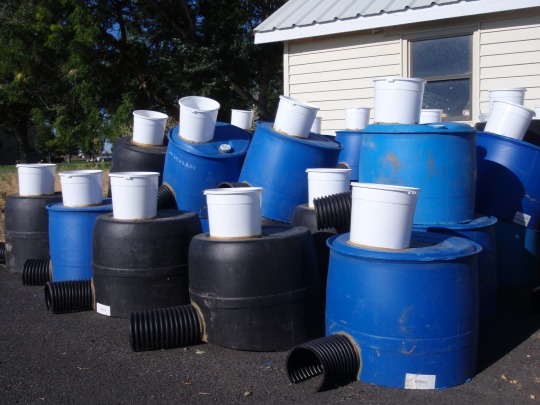
A row of simply designed artificial burrows made using juice barrels, HVAC tubing and plastic buckets. Home, sweet home! Credit to Urban Bird Foundation.
Another reason these burrows have been used is to allow researchers to have easy access to the nesting sites without potentially damaging the eggs or fledglings that may live inside. If you’ve participated in Wildwatch Burrowing Owl on Zooniverse, you’re most likely looking at the entrance to an artificial burrow. They can monitor all sorts of things, such as the health and behavior of its occupants or the type of environment that burrowing owls like to keep inside of their burrows. Being able to open the artificial burrows up also allows researchers to attach bands to fledglings before they’ve left the nest, which lets us keep track of individuals year after year. Bonus: the fledglings may be so traumatized from the encounter that they’ll avoid humans and become less likely to rely on them for resources!
POV: an alien over seven times your size has captured you, given you a fancy anklet, and is dropping you off at your front door. Terrifying. Credit to Matt Poole.
So it’s true, burrowing owls do utilize artificial burrows, they may even have a preference for them!³ You know who else likes artificial burrows? Burrowing mammals.⁴ So, if you were hoping to avoid seeing ground squirrels digging in your garden, artificial burrows might not be the solution you were hoping for. It’s also important to remember that these burrows are utilized as part of a larger strategy for population management, and that there are a lot of other factors that are required for them to be habitable, such as the availability of prey items.¹
Maintenance can also be difficult with artificial burrows. For one, it requires quite a bit of terraforming to get right! Making sure the opening is just the right size for the burrowing owls while preventing predators from entering is really important.¹ Getting these things in the ground is a difficult task on its own, since they are relatively large and require nearly full coverage. Finally, maintenance needs to be done consistently yearly between occupancies, with a deep clean being required every five years.³ Unlike owl boxes, which can simply be nailed up to a post, creating the right habitat for a burrowing owl to move in using artificial methods is quite a bit more involved.
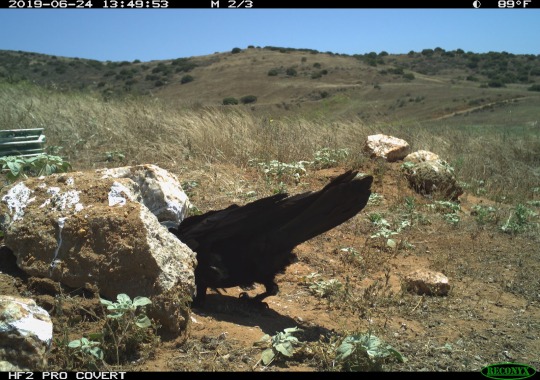
A raven desperate to get inside of a burrow for some delicious owl-nuggets. Probably one of the more common non-owl animals seen on Wildwatch Burrowing Owl–alongside cows. There’s a lot of cows and ravens.
So, while extremely cool, it’s definitely not a solution for everyone. Rather than make one yourself, consider sponsoring an artificial burrow! If you’re dead-set on installing artificial burrows, it would be best to contact nonprofits that specialize in bird conservation such as Urban Bird Foundation or local wildlife rescue organizations to get a better idea of what work needs to be done to install and maintain an artificial burrow on your land.
¹Johnson, D. H., Gillis, D. C., Gregg, M. A., Rebholz, J. L., Lincer, J. L., & Belthoff, J. R. (2010). User guide to the installation of artificial burrows for burrowing owls. Tree Tops Inc. https://wdfw.wa.gov/publications/01199
²Klute, D., Ayers, L., Green, M., Howe, W., Jones, S., Shaffer, J., Sheffield, S., & Zimmerman, T. (2003). Status assessment and conservation plan for the western burrowing owl in the United States. United States Fish and Wildlife: Staff Publications. http://digitalcommons.unl.edu/usfwspubs/483
³Menzel, S. (2018). Artificial burrow use by burrowing owls in northern California. Journal of Raptor Research, 52(2), 167–177. https://doi.org/10.3356/jrr-17-05.1
⁴Keppers, J. L., Skoruppa, M. K., Woodin, M. C., & Hickman, G. C. (2008). Use of artificial burrows by western burrowing owls and other vertebrates during winter in southern Texas. Bulletin of the Texas Ornithological Society, 41(2), 59–64. http://mail.texasbirds.org/publications/bulletins/bulletin_vol_41_2.pdf#page=23
0 notes
Text
75K notes
·
View notes
Text
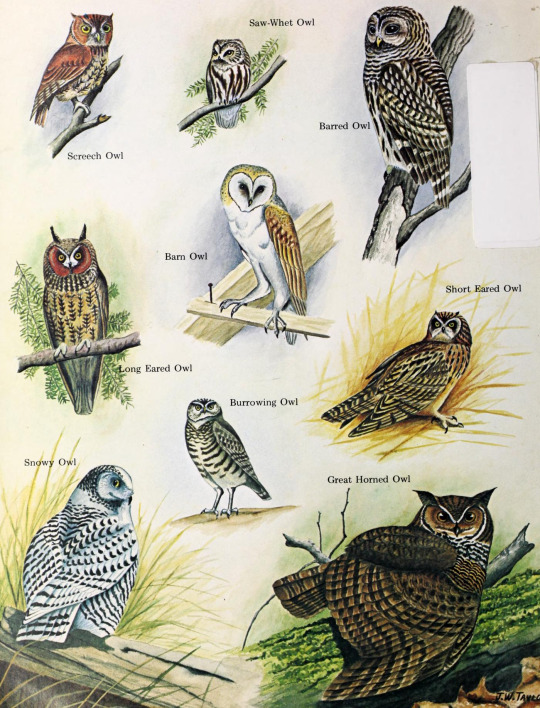
Virginia Wildlife; vol. 39, no. 2. February, 1978. Illustration by John W. Taylor.
Internet Archive
293 notes
·
View notes
Text
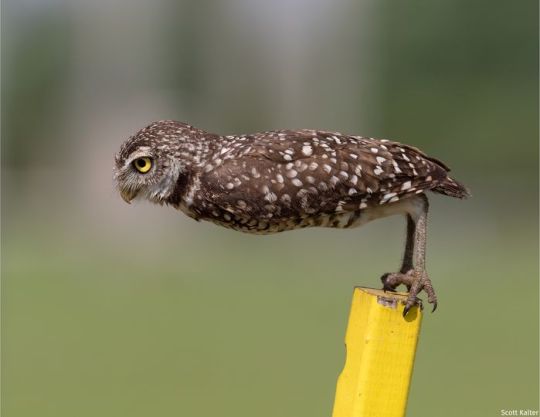
Florida Burrowing Owl (Athene cunicularia floridana) taking off, family Strigidae, order Strigiformes, southern FL, USA
photograph by Scott Kalter
14K notes
·
View notes
Text
Introduction! 🦉
Welcome to The Burrow’s Garden! My name is Amy, and I am a Master’s student with Miami University, Ohio, working towards a degree in biology with a focus on conservation sciences. I am here to tell you everything there is to know about western burrowing owls, and what you could do in your own home garden to help out these lovely little puffballs–maybe even have one move into your own backyard! Backyard-less? Stay tuned, I’ve got something for you, too!
First thing’s first: what is a burrowing owl? Western burrowing owls (scientific name Athene cunicularia hypugaea) are one of two subspecies of burrowing owl found in the United States, the other being their close cousins, the Florida burrowing owl (Athene cunicularia floridana). The western burrowing owl can be found in a range of habitats, from grasslands to urban parks and gardens throughout the western half of North America, from Mexico all the way up to southern Canada!¹

Approximate range of western burrowing owls. Credit to The Cornell Lab of Orinthology.
Why would you want one in your yard? First of all: they’re incredibly cute. These little owls weigh about as much as a stick of butter, with brown and tan speckled feathers, lanky legs, and the most stern looking eyebrows a bird can muster. More importantly: they eat all sorts of things we don’t like in our yards. Field mice digging up your grass? They’ve got you covered. Grasshoppers eating your flowers? Not a problem. Caterpillars, beetles, lizards, you name it: insects and small vertebrates are fair game.
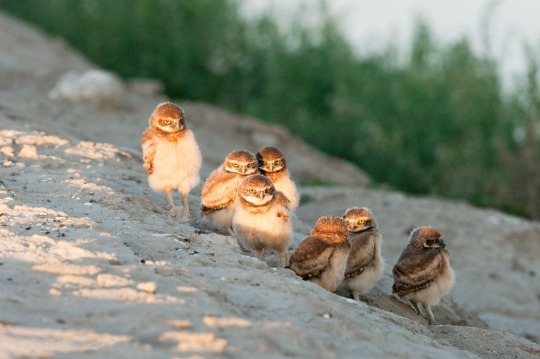
Oh my god they’re baby. Credit to Kevin Cole.
What’s the catch? We-e-ell… Despite what their name suggests, burrowing owls don't generally do the digging themselves. Instead, they rely on the burrows of other small critters to call home. Burrowing owl populations have been declining throughout the United States, and the primary drive is thought to be the lack of burrowing rodents.¹ No burrowing rodents, no burrows. No burrows, no owls!
So, what can you do? Learning to co-exist with burrowing rodents plays a major part in making sure that burrowing owls have someplace to call home. And while they may seem annoying at first, burrowing rodents play a major part in nutrient cycling in soil and increasing biodiversity.² Whether your garden is full of ornamentals, native plants, or any combination of the two, having burrowing rodents around can help the ecosystem–and your garden–stay healthy and resilient. While I can’t guarantee that a burrowing owl will come around as your new neighbor, I hope that I can at least make a case for why keeping the peace with some of the critters we may call “pests” can benefit you and your plants in the long run!
Not a gardener? Not a problem! There are tons of other ways you can help burrowing owls from the comfort of your couch. The Burrowing Owl Recovery Program runs Wildwatch Burrowing Owl on Zooniverse, where you can help researchers sort through trail cam photos of western burrowing owls to get a better idea of how many fledglings are born each year and how they behave. And, this is going to sound crazy, you don’t even need to register an account. One less password to worry about.

The types of burrowing owl antics you’ll see on Wildwatch Burrowing Owl. Don’t worry–they’re not dead. It just isn’t their turn with the braincell.
Want to see a burrowing owl in person? I get it, you want a sneak peek of the real deal. Good news: you’ve got plenty of options. You can visit reputable AZA accredited institutions such as the San Diego Zoo, Phoenix Zoo, or Big Bear Zoo and visit their burrowing owl exhibits! If you’re the outdoorsy type, you can connect with your local Audubon chapter and join them for bird watching hikes, habitat restoration, or visit an Audubon-run sanctuary.
¹Klute, D., Ayers, L., Green, M., Howe, W., Jones, S., Shaffer, J., Sheffield, S., & Zimmerman, T. (2003). Status assessment and conservation plan for the western burrowing owl in the United States. United States Fish and Wildlife: Staff Publications. http://digitalcommons.unl.edu/usfwspubs/483
²Davidson, A. D., Detling, J. K., & Brown, J. H. (2012). Ecological roles and conservation challenges of social, burrowing, herbivorous mammals in the world’s grasslands. Frontiers in Ecology and the Environment, 10(9), 477–486. https://doi.org/10.1890/110054
1 note
·
View note